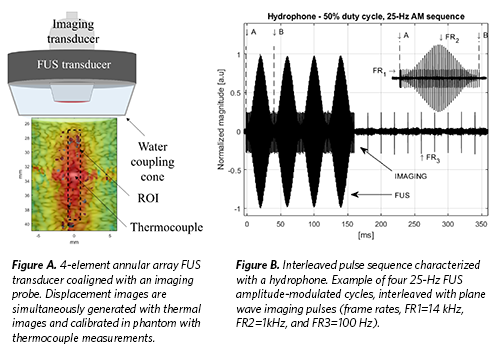Key Points
- A new ultrasound pulse sequence can simultaneously evaluate the contributions of thermal and mechanical effects on tissue caused by focused ultrasound.
- The new sequence uses both thermal strain imaging and harmonic motion imaging.
- Several focused ultrasound applications may find this technology useful.
Elisa Konofagou’s research group at Columbia University has developed an ultrasound pulse sequence that can simultaneously evaluate the contributions of thermal and mechanical effects on tissue caused by focused ultrasound. The new sequence alternates focused ultrasound with plane-wave imaging pulses. It uses thermal strain imaging for measuring temperature changes and harmonic motion imaging for measuring tissue displacement. After testing the sequence in a tissue-mimicking phantom with a wide variety of parameters, the researchers suggested that the new sequence would be useful in applications such as ultrasound neuromodulation and tumor ablation.
See IEEE Open Journal of Ultrasonics, Ferroelectrics, and Frequency Control >

 Synchronous Temperature Variation Monitoring During Ultrasound Imaging and/or Treatment Pulse Application: A Phantom Study
Synchronous Temperature Variation Monitoring During Ultrasound Imaging and/or Treatment Pulse Application: A Phantom Study